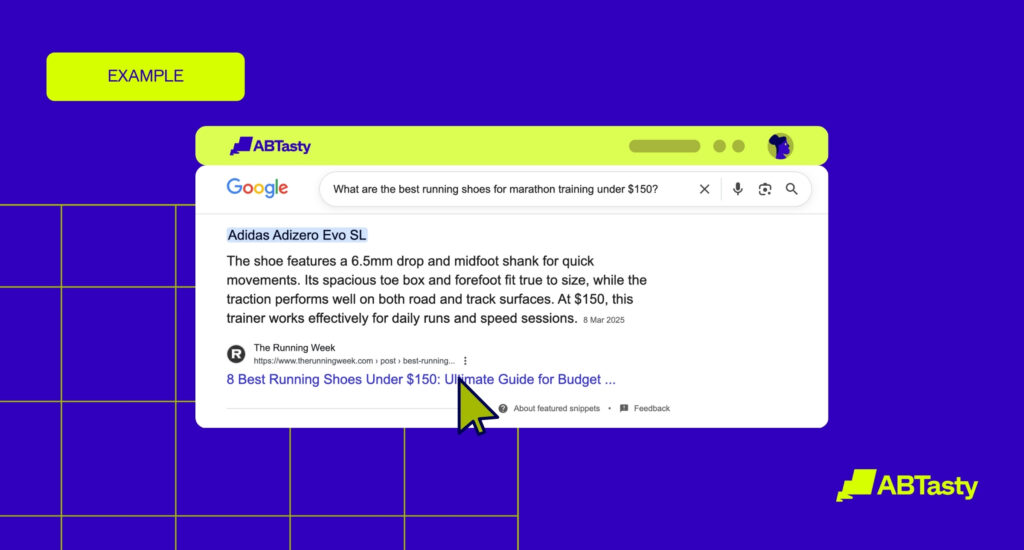For two decades, the digital playbook has been clear: get clicks. Whether you’re selling sneakers or flights, success has been a game of climbing search rankings, optimizing landing pages, and guiding users through a funnel you meticulously built on your own website. That predictable path from a Google search to your checkout page is now being fundamentally rerouted.
The era of AI-driven discovery is here. Tools like Perplexity, Google’s AI Overviews, and ChatGPT are shifting user behavior from searching to asking. Instead of a list of blue links, users get a direct answer, a curated summary, or a complete travel itinerary. Now, with AI models integrating “buy” functionality, the journey is being short-circuited entirely. The conversation itself is becoming the point of sale.
This isn’t just another channel to manage; it’s a paradigm shift that challenges the core assumptions of digital marketing. For e-commerce and travel brands, the question isn’t just “how do we adapt?” but “what are we adapting to?” The truth is, nobody has all the answers yet. What follows isn’t a playbook, because a playbook doesn’t exist. It’s a pragmatic look at the shifts we’re seeing, how we might start to measure this new world, and why a culture of experimentation has never been more critical.
The new reality: From search to answers
The fundamental change is the introduction of a powerful new middle layer between a user’s intent and a brand’s website. Large language models (LLMs) are becoming expert synthesizers. A user asking, “What are the best running shoes for marathon training under $150?” no longer gets ten articles to read. They get a direct, compiled answer listing three specific models with summarized reviews and maybe a link.
This is the great unbundling of the search results page. The user gets their answer without ever needing to visit multiple sites to compare and contrast. And with platforms like ChatGPT embedding purchasing capabilities, that final step—the transaction—can happen right there in the chat interface. The website, once the center of the customer journey, risks becoming a simple fulfillment endpoint or, in some cases, being skipped entirely.

E-Commerce impact: When the storefront shrinks to a chat window
For e-commerce brands, this shift feels personal. The product detail page (PDP) is sacred ground. It’s a carefully crafted space for storytelling, cross-sells, and brand building. When discovery and comparison happen inside an AI, that ground vanishes.

The immediate impacts are clear:
- A drop in direct traffic: Fewer users will land directly on product or category pages, making it harder to guide them through a curated experience.
- The conversion conundrum: If a sale is initiated in a chat and fulfilled on your site (or via an API), how do you attribute it? Traditional last-click models become obsolete.
- Lost opportunities: The spontaneous cross-sell (“Customers also bought…”) or the carefully placed upsell becomes much harder when you don’t own the interface.
Success in this new ecosystem may hinge on a brand’s ability to be “AI-friendly.” This isn’t about keywords; it’s about data. The brands most likely to be recommended by an LLM will be those with impeccable, highly structured product data that the AI can easily parse and trust. Your product catalog becomes your new landing page.
Travel’s new tour guide: The AI agent
The travel industry is perhaps even more exposed to this disruption. An LLM is, in effect, the ultimate travel agent. A single prompt like, “Plan a 5-day family-friendly trip to Lisbon in May, staying near the city center with a budget of $2,000,” can generate a complete itinerary with hotel options, flight suggestions, and activity booking links.

Brands risk being reduced to a single line item in an AI-generated plan. The key challenges are:
- Disintermediation: If the AI presents three hotel options that all meet the user’s criteria, the brand’s own marketing and website become secondary to the AI’s curation.
- Data accuracy is everything: Travel is time-sensitive. An AI won’t recommend a hotel or flight if it can’t confidently access real-time availability, accurate pricing, and clear policies. Outdated or poorly structured data is a death sentence.
- Commoditization: Without the ability to showcase a unique brand experience on their own site, hotels and airlines risk being chosen on price and basic features alone.
For travel, the path forward requires a radical focus on the quality and accessibility of data. Think rich, structured, and instantly available information that makes your offering the easiest and most reliable choice for an AI to recommend.
Attribution in the age of answers
So, how do we measure success when clicks and rankings no longer tell the whole story? This is where the uncertainty is most palpable. The new platforms are largely opaque, and a new set of metrics is still emerging.
The conversation is shifting from “how did they find our site?” to “are we part of the AI’s conversation?” Potential new measures might include:
- Mentions and citations: Tracking how often your brand or products are cited as answers to relevant queries.
- Branded query lift: An increase in users asking for your brand by name (“Find me Nike running shoes”) becomes a powerful indicator of success.
- Referral attribution: As partnerships form, tracking referrals directly from AI platforms will be crucial, though likely limited to their chosen partners.
For now, tracking remains experimental, but some signals are becoming clearer. We can now see referral traffic from sources like chat.openai.com and perplexity.ai in analytics. However, traffic from Google’s AI Overviews is currently blended with traditional organic search, making it difficult to isolate. This means a complete picture is still impossible, requiring a combination of brand monitoring and deep analysis of the referral data we can get.
Can brands catch up? The case for test-and-learn
This new search paradigm is full of unknowns, but waiting for a settled playbook isn’t a strategy. The only viable posture is a disciplined, test-and-learn mindset. The goal is to make your brand as legible, authoritative, and accessible to AI as possible, preparing you for whatever comes next.
Potential strategies include:
- Mastering structured data: Implementing comprehensive schema markup across your site is no longer optional. It’s the cost of entry.
- Creating AI-friendly content: Develop clear, factual, and easily digestible content that directly answers common customer questions, making it prime material for an LLM to cite.
- Investing in brand and loyalty: When users are overwhelmed with AI-curated choices, a trusted brand name becomes a powerful shortcut. Loyalty programs and excellent customer experiences will be more important than ever.
- Exploring API integrations: For larger brands, pursuing direct API integrations with major chat platforms could be a way to ensure your inventory and data are seamlessly included in their results.
The honest truth is that this ecosystem is still being built, and the rules are changing in real-time. The brands best positioned to navigate this shift won’t be the ones who guess the future correctly, but those who build a culture of rapid experimentation. The only question is, what will you try next?






